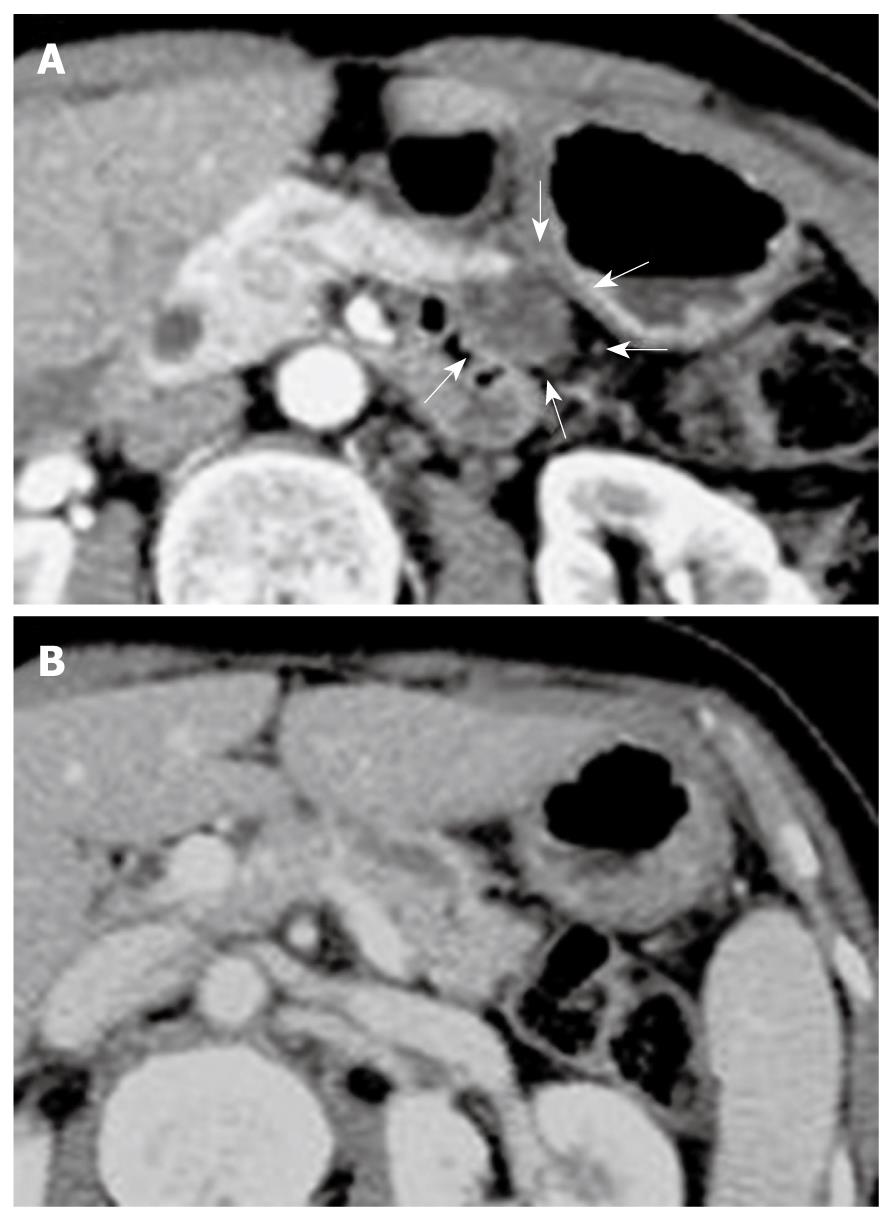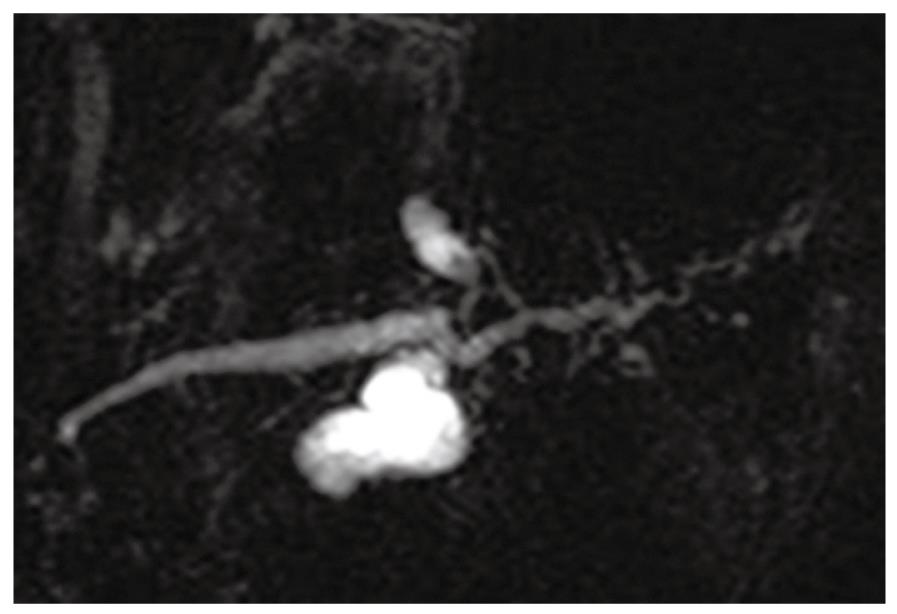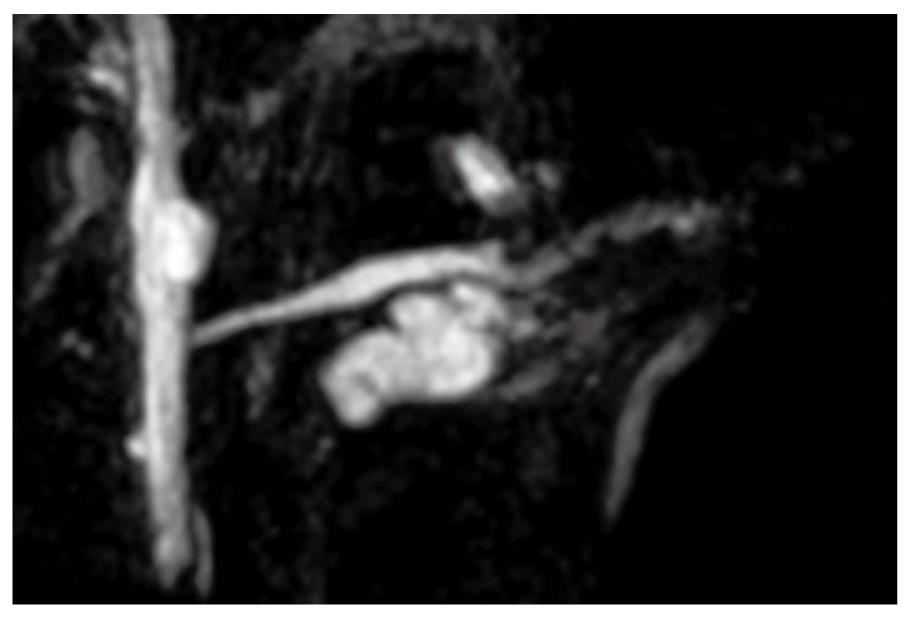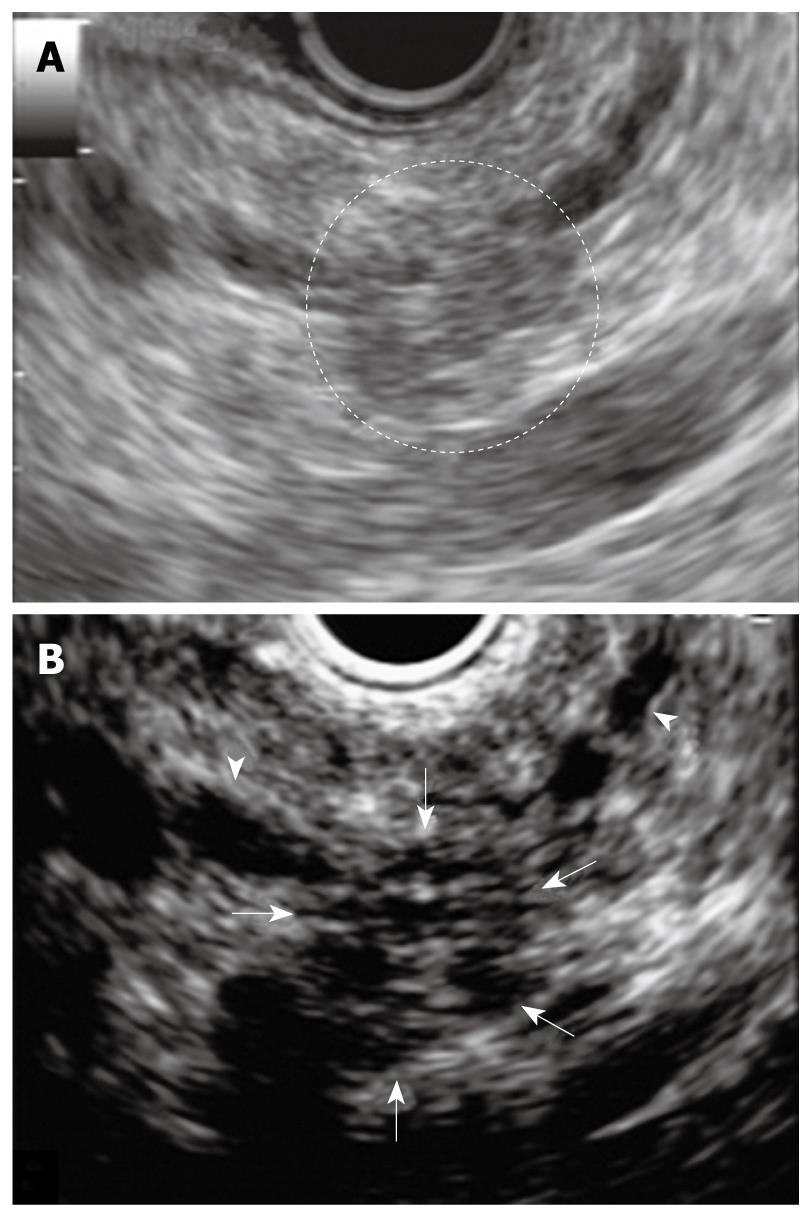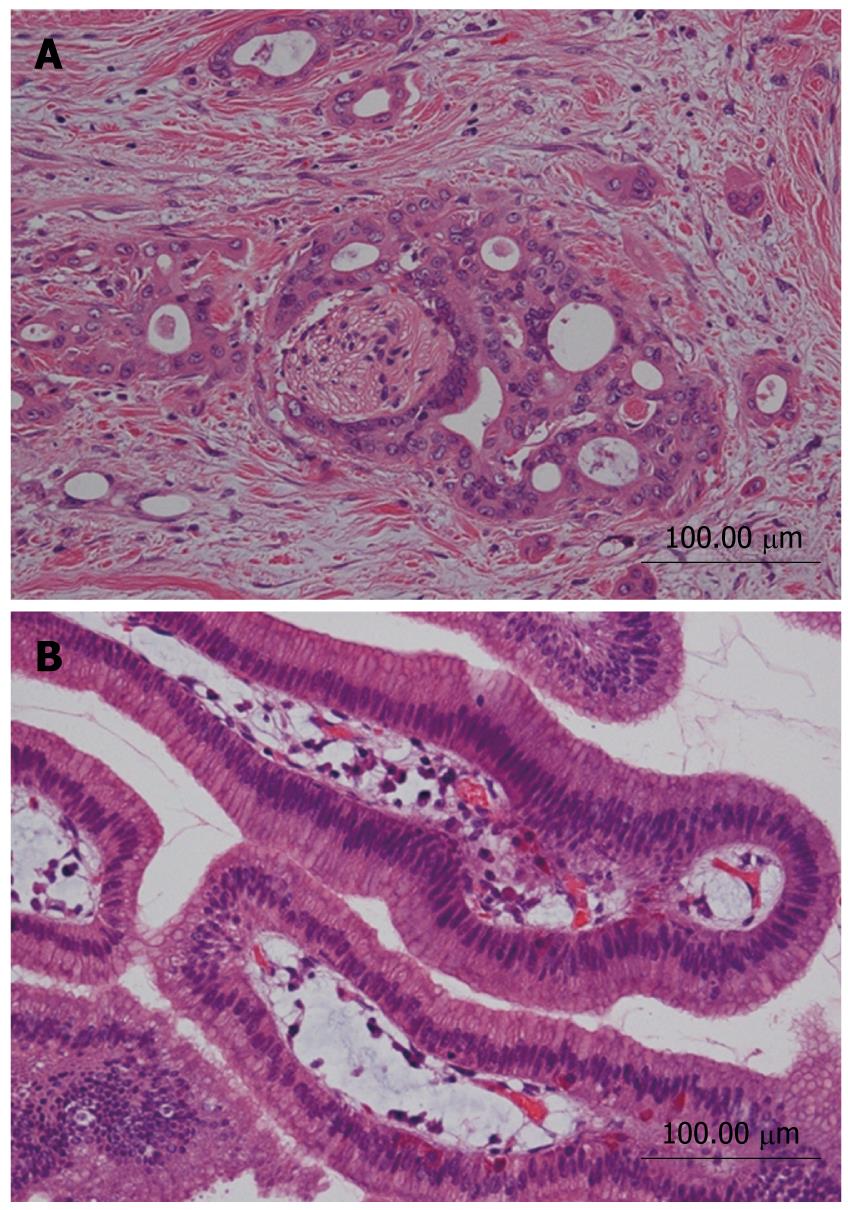Copyright
©2009 The WJG Press and Baishideng.
World J Gastroenterol. Nov 21, 2009; 15(43): 5489-5492
Published online Nov 21, 2009. doi: 10.3748/wjg.15.5489
Published online Nov 21, 2009. doi: 10.3748/wjg.15.5489
Figure 1 Contrast-enhanced computed tomography (CE-CT) scan of pancreas.
A: A cystic lesion in pancreatic body (arrows); B: A dilatation of the main duct in the pancreatic tail. Solid masses were not observed.
Figure 2 Magnetic resonance cholangiopancreatography (MRCP) at initial examination showing dilatation of the branch duct.
Figure 3 The size of the branch ducts was unchanged one year after the last MRCP.
Figure 4 Endoscopic ultrasonography (EUS) at two years later examination showing pancreatic tail.
A: EUS showing low echoic lesion which is vague and the area had unclear margins in the pancreatic tail; B: Contrast-enhanced harmonic EUS showing a clear margin of 10 mm in diameter and hypovascular nodule compared with surrounding pancreatic tissue (arrows). MPD: Main pancreatic duct (arrowheads).
Figure 5 Scheme showing the pancreatic body and tail by pancreatoduodenectomy.
A: Intraductal papillary tumor of the pancreatic body; B: Invasive adenocarcinoma of the pancreatic tail.
Figure 6 Histological appearance of two lesions (HE).
A: Intraductal papillary mucinous adenoma; B: Moderately differentiated tubular adenocarcinoma.
- Citation: Sakamoto H, Kitano M, Komaki T, Imai H, Kamata K, Kimura M, Takeyama Y, Kudo M. Small invasive ductal carcinoma of the pancreas distinct from branch duct intraductal papillary mucinous neoplasm. World J Gastroenterol 2009; 15(43): 5489-5492
- URL: https://www.wjgnet.com/1007-9327/full/v15/i43/5489.htm
- DOI: https://dx.doi.org/10.3748/wjg.15.5489









